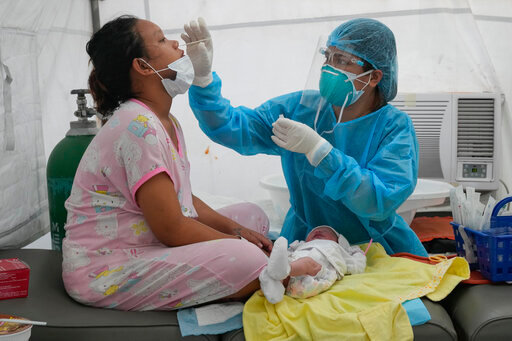
Much of Asia has largely managed to keep omicron at bay even as the variant rages in other parts of the world, but the region that is home to most of the globe’s population is bracing for what may be an inevitable surge.
Strict quarantine rules for arrivals and widespread mask wearing have helped slow the spread of the highly contagious variant in Asia. Countries such as Japan, South Korea and Thailand quickly reinstated entry and quarantine restrictions in recent weeks after relaxing them in the fall.
But cases are mounting, and experts say the next few months will be critical. Those fears have been amplified by doubts about the effectiveness of the Chinese-made vaccines used in China and much of the developing world.
In India, which has been getting back to normal after a devastating COVID-19 outbreak earlier this year, omicron is once again raising fears, with more than 700 cases reported in the country of nearly 1.4 billion people.
The capital, New Delhi, banned large gatherings for Christmas and New Year’s, and many other states have announced new restrictions, including curfews and vaccination requirements at stores and restaurants.
At the crowded Chandni Chowk market in New Delhi, many people were shopping without masks this week. Cycle rickshaw driver Mahesh Kumar said he is afraid of passengers who don’t wear masks.
Australia is already dealing with multiple COVID-19 surges, with a state leader saying Wednesday that “omicron is moving too quickly.” Elsewhere, Thailand has topped 700 cases, South Korea has more than 500 and Japan, over 300. China, which has some of the strictest virus controls in the world, has reported at least eight.
Only four cases have been reported in the Philippines, where people flocked to shopping malls ahead of Christmas and to Mass in the biggest Roman Catholic nation in Asia. Some hospitals have even begun dismantling COVID-19 wards in a move experts say could prove to be premature.
Japan managed to delay the spread of the new variant for about a month largely thanks to its reimposition of entry restrictions, mandatory COVID-19 tests for all arrivals and the isolation of all passengers on a flight if anyone tested positive for omicron.
How China’s zero-COVID-19 policy will play out at the Olympics is a major question. Athletes and visitors will not be allowed to leave the Olympic zones, and those attending such as officials, journalists and venue staff will be tested every day.
To contain a deadly delta-driven surge in South Korea, the government this month restored its toughest distancing rules with a four-person limit on private gatherings and a 9 p.m. curfew on restaurants.
Health experts predict it’s only a matter of time before omicron comes.